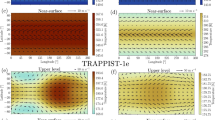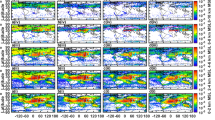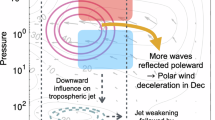Abstract
A SEMI-ANNUAL variation in upper-atmosphere density, with maxima in April and October, and minima in January and July, was discovered in 1960 and has been generally accepted as a feature of the upper atmosphere at heights of 250–600 km. In a recent article, Anderson1 suggested that the variation is a disguised effect of latitude. Anderson's hypothesis can be tested by analysing the orbit of a satellite of a near-circular polar orbit which samples all latitudes in a nearly equal degree. If the semi-annual variation is recognizable in the orbit of such a satellite, it cannot be due to changes in latitude.
This is a preview of subscription content, access via your institution
Access options
Subscribe to this journal
Receive 51 print issues and online access
$199.00 per year
only $3.90 per issue
Buy this article
- Purchase on SpringerLink
- Instant access to full article PDF
Prices may be subject to local taxes which are calculated during checkout
Similar content being viewed by others
References
Anderson, A. D., Nature, 209, 656 (1966).
Merson, R. H., and Neville, E. R., Orbital Parameters of Samos 2, R.A.E. Tech. Rep., 66042 (1966).
King-Hele, D. G., Theory of Satellite Orbits in an Atmosphere, chapt. 5 (Butterworths, London, 1964).
Cook, G. E., and King-Hele, D. G., Phil. Trans., 259, 33 (1965).
Author information
Authors and Affiliations
Rights and permissions
About this article
Cite this article
KING-HELE, D. Semi-annual Variation in Upper-atmosphere Density. Nature 210, 1032 (1966). https://doi.org/10.1038/2101032a0
Issue date:
DOI: https://doi.org/10.1038/2101032a0



